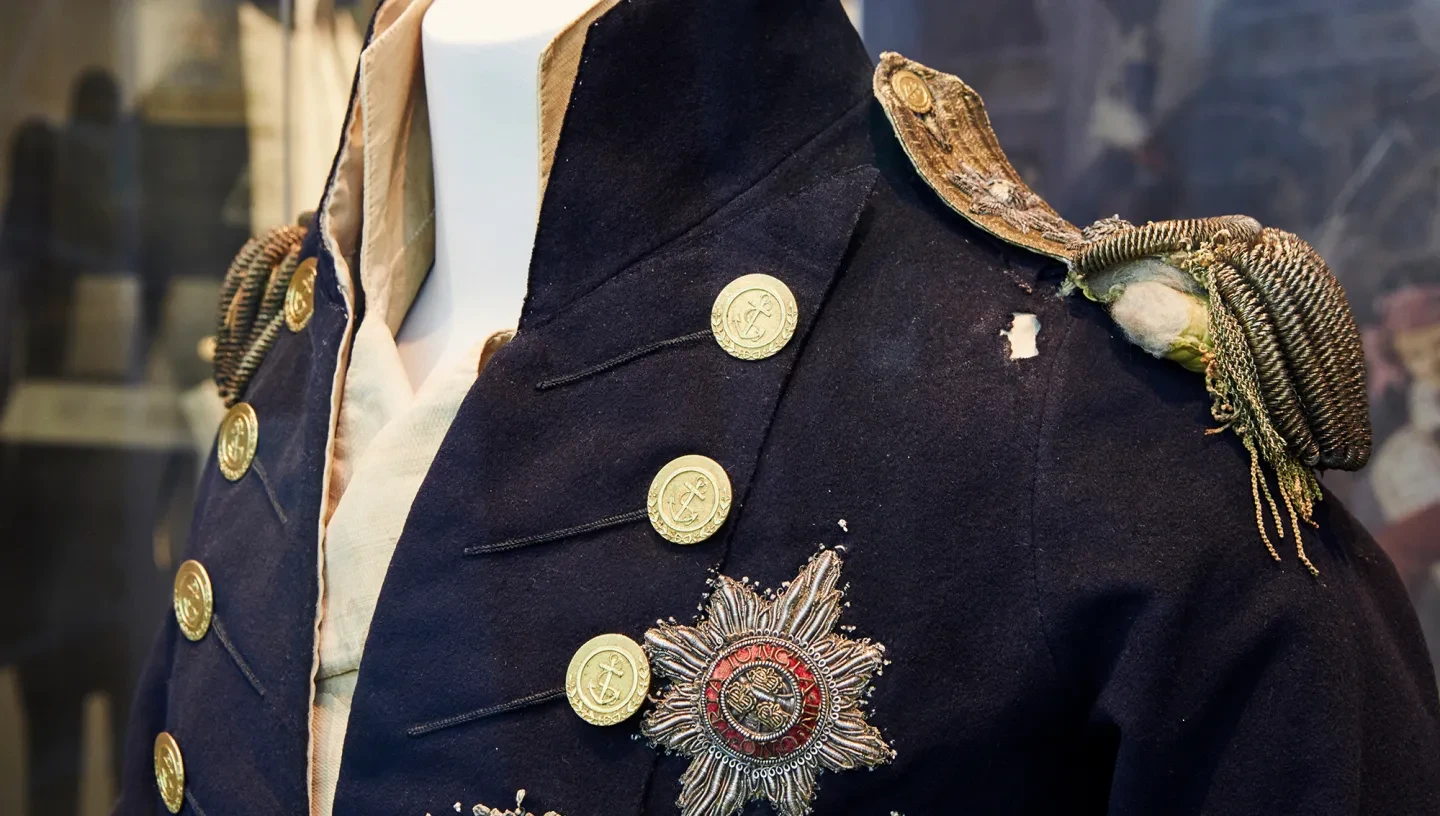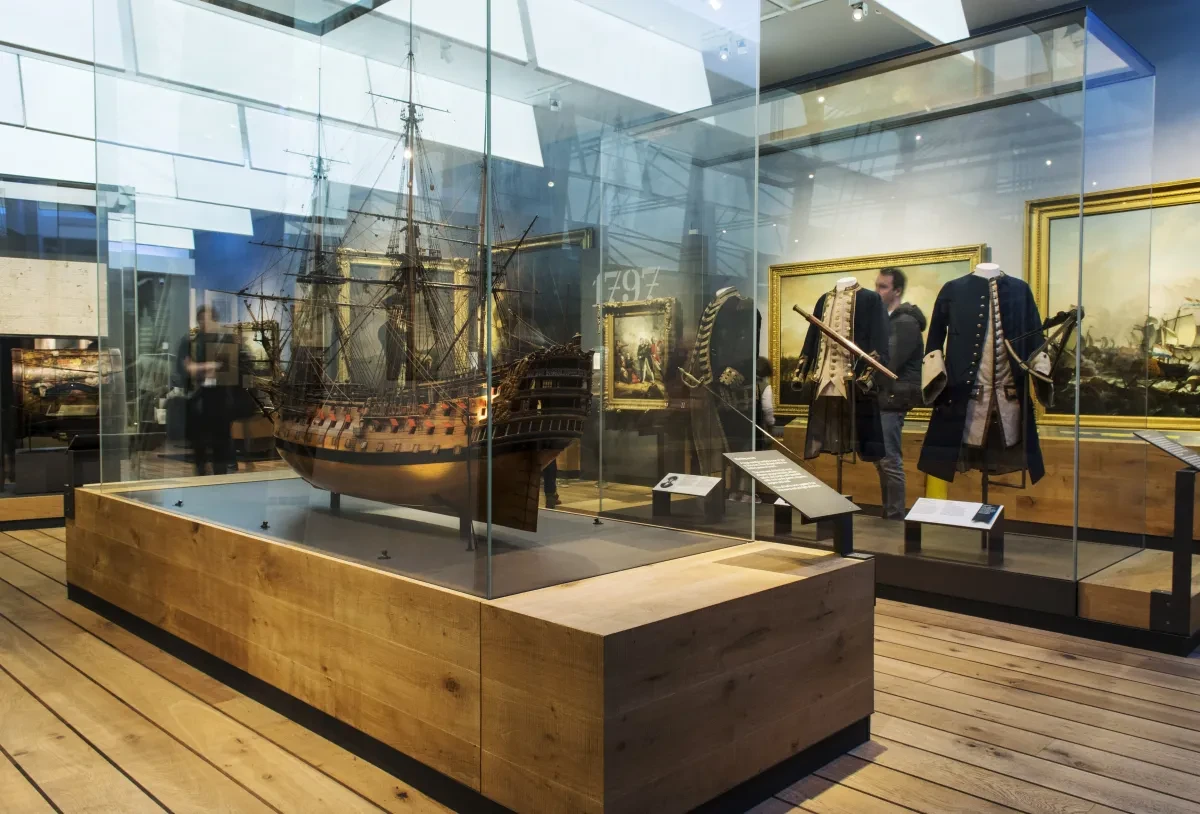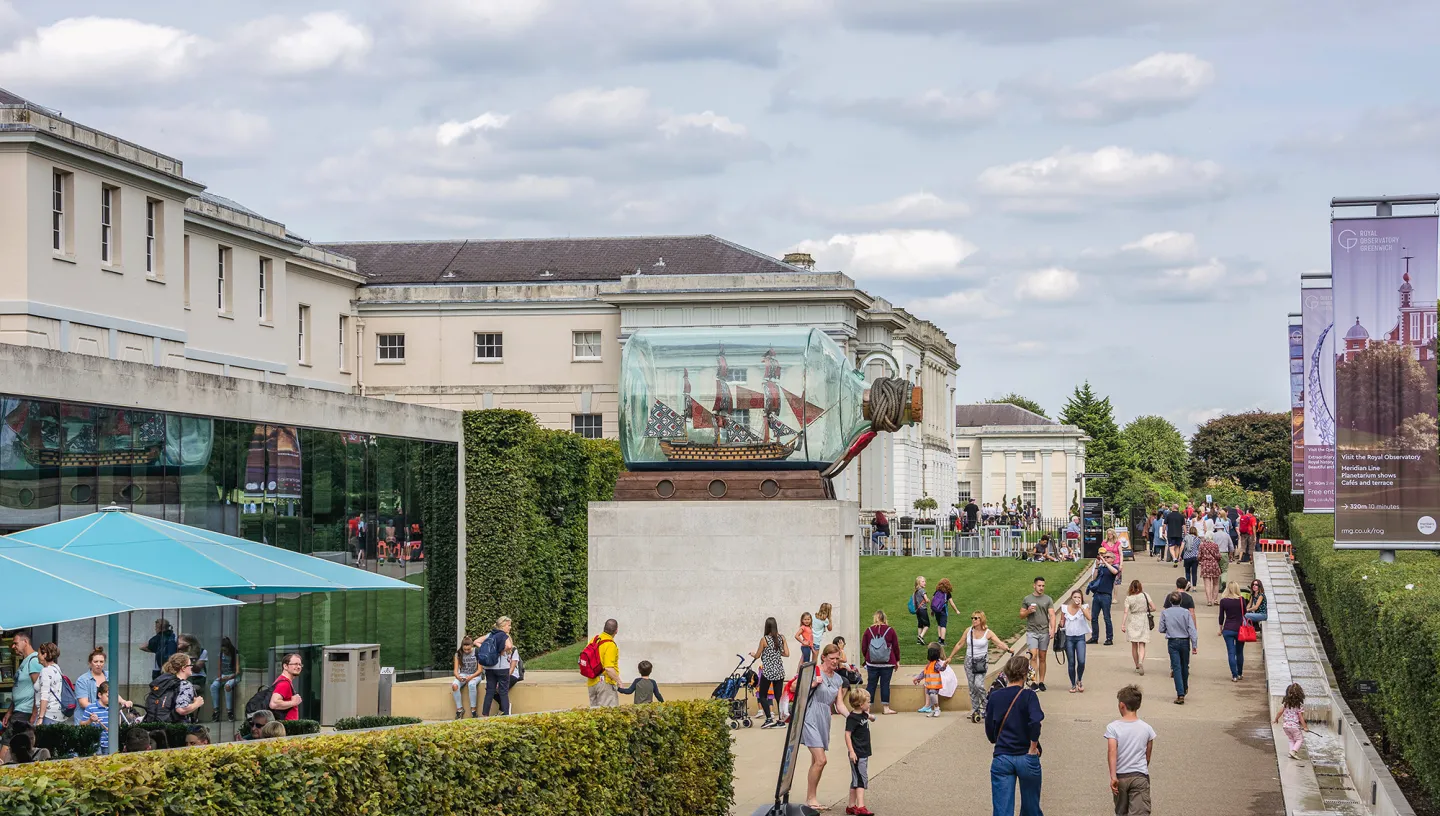
Essential information
| Location | |
|---|---|
| Price | Free |
For much of the 18th and 19th centuries, Britain was at war with European rivals, such as France.
During this period, the Royal Navy played a crucial role in British daily life. It protected the nation against invasion and generated wealth and employment by defending and promoting trade.
Britain’s naval successes saw officers achieve celebrity status. The most famous of these was Vice-Admiral Horatio Nelson, whose daring victories in the Napoleonic Wars and the Battle of Trafalgar in 1805 established his heroic reputation.
Triumph and loss, fear and bravery, fame and pain: discover the history of life at sea in the Nelson, Navy, Nation gallery at the National Maritime Museum.
Inside the gallery

From bustling dockyards to sea battles, the gallery offers an insight into life in the Royal Navy, spanning the Glorious Revolution of 1688 to the defeat of Napoleon in 1815.
This was a time of turmoil. The Glorious Revolution – which saw James II overthrown by William III and Mary II – and ongoing tensions with France highlighted the ever-present threat of invasion.
The Royal Navy was Britain’s first line of defence against potential attacks. The Royal Dockyards at Deptford, Woolwich, Chatham, Sheerness, Portsmouth and Plymouth were vast industrial hubs, responsible for building and maintaining state-of-the-art warships.
These large vessels accommodated up to 800 crew members, such as officers, sailors, carpenters and surgeons.
Life on board was filled with challenges, including cramped conditions and disease. Naval battles came with the risk of serious injury and death; however, victories in these conflicts could result in officers becoming celebrities.
The most celebrated naval officer in British history, Vice-Admiral Horatio Nelson was catapulted to fame following his defeat of the French fleet at the Battle of the Nile in 1798.
His greatest victory – and final encounter – occurred on 21 October 1805 at the Battle of Trafalgar. Nelson led Britain to victory against a combined French and Spanish fleet, but he was killed in the conflict by a musket shot. Nelson’s death resulted in an outpouring of public grief, and he received a state funeral at St Paul’s Cathedral.
Following the Battle of Trafalgar, Britain’s naval success continued. In 1815, the Royal Navy played an instrumental part in defeating French Emperor Napoleon Bonaparte at the Battle of Waterloo.
Visiting Nelson, Navy, Nation
Where is the gallery?
Nelson, Navy, Nation is a permanent gallery at the National Maritime Museum in Greenwich, located on the second floor. Entry to the Museum is free: book tickets online in advance to guarantee entry and receive updates before you visit.
Tours and audio guides
Nelson, Navy, Nation features as part of the range of audio guides available at the National Maritime Museum. Listen to a free introduction to the gallery here, or find out more about objects on display by ordering a special Treasures Tour.
Accessibility
BSL is included as part of the National Maritime Museum audio guide. Large print guides are also available inside the gallery. For more information about accessibility at the National Maritime Museum, click here.
Gallery closures
Occasionally some gallery closures may affect your visit to the National Maritime Museum. Find details of upcoming closures here.
Ideas for families
Keep an eye out for the special 'Play' boxes dotted around the gallery. Discover what seafarers ate at sea and learn how they kept ships clean!
Make the most of your visit
Find more free galleries and attractions at the National Maritime Museum.
Tickets and Opening
Free entry
10am-5pm daily
- Greenwich Station
- Maze Hill Station
- Greenwich Pier












